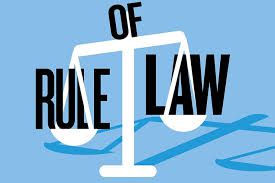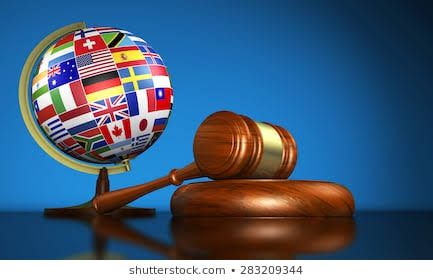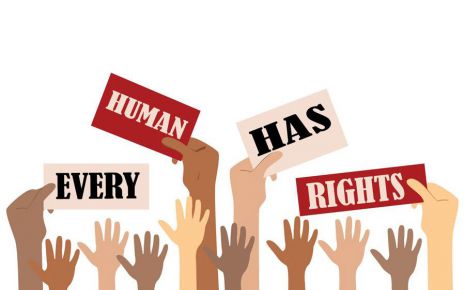Mediation: An Efficient Method For Resolving International Intractable Conflicts
Intractable conflicts are the conflicts which have not been resolved for a very
long time and such conflicts leads to political, economic and diplomatic
tensions among nations. The primary objective of international disputes
resolution mechanisms is to maintain peace and security among the nations.
However, these intractable conflicts pose a serious threat and inversible
effects in the international arena.
In general, arbitration is most preferred mechanism for resolving disputes, however knowing the nature and seriousness of the conflict mediation is one such mechanism which would be most efficient and it provides promising approach and management in resolving the intractable disputes.
Introduction:
The question arises is that why mediation is most suitable for such conflicts? (WHY MEDIATION)
To understand this, we need to know what mediation is and what are its characteristics.
"The intervention into any dispute by a neutral third party to assist the disputing parties in voluntarily coming into a mutual understanding and settle the dispute between them." The third party in mediation does not have any decision making power.
Mediation is one of the dispute resolution mechanisms which is different from other forms of resolution. It operates on ad hoc basis which means that the process and the result are entirely based on the preferences of parties. The process of mediation is such that a third neutral party is being appointed who facilitates both the parties to agree at a point. They aid in resolving the conflicts by modifying and influencing the parties in a manner which would lead to a peaceful and beneficial agreement between the parties. Mediators can be an individual, organization or even a state.
Mediation is such a process where there is no formal judgements or arguments taking places, it is more of an informal approach for resolving the disputes when compared to judicial adjudication or for that matter, any other form of dispute resolution. It is non-judgmental and non-coercive in nature, which makes it one of the best options which states can chose for solving the intractable conflicts. The ultimate result of mediation is an agreement. The parties are free to voice out their issues and mediator will have the duty to address the issues in a non-violent way.
On an international/ global platform there are numerous states having conflicts and disputes over various matter be it trade, technology, defense, peace and security, Ideological Differences, National Integrity, Territorial Claim, National Prestige, Unlimited Colonialism, Liberation Movements. As the global economy is heading forward with major advancements in every field, there is more and more of competition and it is leading to economical, political and diplomatic tensions among nations. Mediation is most suitable for the international reality. It helps the states in maintaining their dignity, independence and autonomy.
Intractable conflicts are such that they lead to major destruction of not just the parties involved but also the citizens, connected nations and organizations. The positive outcome of mediation is crucial for maintaining the dignity, harmony, peace and humanity between the nations.
Steps involved:
The mediation has certain steps, strategies, procedures to be followed. Though it being an amicable and informal approach of solving international disputes, the process must be followed to ensure fair and clear process of resolution which will provide satisfaction to the parties. Mediators will have many techniques and resources to transform the intractable conflict into a resolved dispute with mutual agreement of the parties pacifically.
How do mediators assist in resolving disputes:
Mediators serve the parties who themselves put efforts in settling the dispute between them and mediators intervenes as third party in the dispute. Mediator have some strategies which help them to deal with intractable conflicts. The strategies are: a) communication-facilitation strategies b) procedural strategies and c) directive strategies. The mediators majorly rely on one of these strategies to resolve the issues.
Components of successful mediation:
Mediation Process:
Ex: In the case of Yugoslavia the mediators were UK, US and UN.
A famous example of mediation is when the Soviet Premier Kosygin settled the dispute between India and Pakistan by signing the Tashkent Agreement in 1966.
Tashkent Declaration, also called Tashkent Agreement, accord signed on January 10, 1966, by India's Prime Minister Lal Bahadur Shastri (who died the next day) and Pakistan's Pres. Mohammad Ayub Khan, ending the war between Pakistan and India that occurred from August 1965 to September 1965. A ceasefire had been secured by the United Nations Security Council on September 22, 1965.
What was the Tashkent Declaration?
In the year 1965 (August 5, 1965 - September 23, 1965) Indo-Pakistan war was going on, and later on to settle the matter amicably, the Tashkent Declaration i.e., a peace agreement was signed between India and Pakistan. This agreement, as the name suggests was signed in Tashkent, capital of Uzbekistan.
The primary objective of this agreement was to restore peace and the diplomatic relations between both the countries. It aimed to keep each of them away from their internal and external matters and aid them in working towards the bilateral relations.
Background:
First Kashmir War (22 October 1947 - 5 January 1949) which was between India and Pakistan was fought just after the independence of India and Pakistan.
A ceasefire agreement led to the establishment of the Line of Control (LOC) as the de facto border between India and Pakistan in Kashmir.
Pakistan, in the year 1965 sent its forces in Kashmir dresses as locals in order to capture the territory by manipulating the local population against then Indian Government. This was called as Operation Gibraltar. This operation was not successful as one of the locals informed about this operation to the Indian army and the 1965 war broke out. In the end, both India and Pakistan agreed to cease all hostilities after a United Nations Security Council resolution calling for the end of the war was passed on 22nd September 1965.
Tashkent Declaration - Salient Points
According to the Declaration, both the countries need to follow some points:
Conclusion:
Mediation being one of the processes of dispute resolution in the International Conflicts, stands on the front page when it comes to resolving the international intractable conflicts. Mediation is proven to be an efficient and trust worthy process wherein both the parties agree on a central point and opts for peace and social security over fights and conflicts. The primary objective of the dispute resolution systems is to ensure global peace and security.
It promotes it and tries to facilitate fair and just way of resolving the disputes among nations. The agreement which was made through mediation process which helped in solving one of the major disputes between the nations in a very expeditious manner. This sets as an example that if such burning issues can be solved through mediation, then the intractable conflicts which are having no stand point and upgradation over resolution with respect to the disputes, then in such cases Mediation process will prove to the most efficient and result oriented one.
Overall, it is essential for parties to resolve their disputes in expeditious manner which retains the social dignity of the nations in the eyes of international society and ensures its' citizens safety and overall wellbeing.
References:
In general, arbitration is most preferred mechanism for resolving disputes, however knowing the nature and seriousness of the conflict mediation is one such mechanism which would be most efficient and it provides promising approach and management in resolving the intractable disputes.
Introduction:
The question arises is that why mediation is most suitable for such conflicts? (WHY MEDIATION)
To understand this, we need to know what mediation is and what are its characteristics.
"The intervention into any dispute by a neutral third party to assist the disputing parties in voluntarily coming into a mutual understanding and settle the dispute between them." The third party in mediation does not have any decision making power.
Mediation is one of the dispute resolution mechanisms which is different from other forms of resolution. It operates on ad hoc basis which means that the process and the result are entirely based on the preferences of parties. The process of mediation is such that a third neutral party is being appointed who facilitates both the parties to agree at a point. They aid in resolving the conflicts by modifying and influencing the parties in a manner which would lead to a peaceful and beneficial agreement between the parties. Mediators can be an individual, organization or even a state.
Mediation is such a process where there is no formal judgements or arguments taking places, it is more of an informal approach for resolving the disputes when compared to judicial adjudication or for that matter, any other form of dispute resolution. It is non-judgmental and non-coercive in nature, which makes it one of the best options which states can chose for solving the intractable conflicts. The ultimate result of mediation is an agreement. The parties are free to voice out their issues and mediator will have the duty to address the issues in a non-violent way.
On an international/ global platform there are numerous states having conflicts and disputes over various matter be it trade, technology, defense, peace and security, Ideological Differences, National Integrity, Territorial Claim, National Prestige, Unlimited Colonialism, Liberation Movements. As the global economy is heading forward with major advancements in every field, there is more and more of competition and it is leading to economical, political and diplomatic tensions among nations. Mediation is most suitable for the international reality. It helps the states in maintaining their dignity, independence and autonomy.
Intractable conflicts are such that they lead to major destruction of not just the parties involved but also the citizens, connected nations and organizations. The positive outcome of mediation is crucial for maintaining the dignity, harmony, peace and humanity between the nations.
Steps involved:
The mediation has certain steps, strategies, procedures to be followed. Though it being an amicable and informal approach of solving international disputes, the process must be followed to ensure fair and clear process of resolution which will provide satisfaction to the parties. Mediators will have many techniques and resources to transform the intractable conflict into a resolved dispute with mutual agreement of the parties pacifically.
How do mediators assist in resolving disputes:
Mediators serve the parties who themselves put efforts in settling the dispute between them and mediators intervenes as third party in the dispute. Mediator have some strategies which help them to deal with intractable conflicts. The strategies are: a) communication-facilitation strategies b) procedural strategies and c) directive strategies. The mediators majorly rely on one of these strategies to resolve the issues.
-
Communication-facilitation strategies: The mediator's behaviour in this strategy is that of passive. The mediator plays a crucial role in this; however, it has minimal intervention in the process. It aids the states by cooperating, channelizing the information for the parties, and it shows the least control over the process. Parties themselves try to communicate the main issue, enter into discussions, and the mediator will not have any formal intervention in it. For peacemaking, the mediator will communicate the central issues of both parties to each other and facilitate further dialogues between the parties. This is the main role and prerequisite work of the mediator.
-
Procedural Strategies: In this strategy, mediators bring both parties into a neutral and friendly environment, and it may exercise its control over the process in order to reach an agreement for peace and settlement. In intractable conflicts, parties might have not had the opportunity to meet and communicate for real. This strategy would significantly assist the parties to solve a long-time dispute between them.
- Directive Strategies: It is a powerful form of intervention by the mediators. Mediators while applying this strategy offer incentives, promise support, or they may also apply diplomatic sanctions or threats to bring the parties together and solve their issues. This strategy holds a crucial place as it will change the value and effect of the dispute between the parties wherein they might get some mutual benefit or may lose something if they do not resolve such an intractable conflict. They may use various formal facts to influence the parties in such a way that they change the value and behavior towards the dispute and end the intractable conflict ultimately.
Components of successful mediation:
- Agreement to mediate
- Undertaking comprehensive reviews of the issues and preparing for mediation
- Generating options and weighing their feasibility for possible settlement avenues with the assistance of mediator
- Reaching a mutually acceptable agreement of settlement
- Following up and implementation of the agreement
Mediation Process:
- Planning by mediator: The mediator prepares a scheme considering all the necessary points to be discussed.
- Introductory remarks: In this stage the mediator discloses the information which is being mentioned in the scheme and by this disclosure parties are satisfied and it ensures transparency and clear communication between the mediator and the parties.
- Opening remarks: In the opening remarks the mediator kick starts the process by stating his impartiality in the matter and informs about further formalities.
- Joint discussion: The mediators make sure that he negotiates the issues with both the parties pertaining to the legal aspects and in this way both parties confront each other and try solving their conflict.
- Confidential meetings: The mediation process happens individually with each party as well This is done in order to ensure freeness and openness of the parties in discussing their primary problem which will help mediator to understand the issue better and he can put it before the other party which will increase the chances of solving the intractable conflicts.
- Negotiations: This is the final stage wherein the negotiations happen and parties eventually come into an agreement.
Ex: In the case of Yugoslavia the mediators were UK, US and UN.
A famous example of mediation is when the Soviet Premier Kosygin settled the dispute between India and Pakistan by signing the Tashkent Agreement in 1966.
Tashkent Declaration, also called Tashkent Agreement, accord signed on January 10, 1966, by India's Prime Minister Lal Bahadur Shastri (who died the next day) and Pakistan's Pres. Mohammad Ayub Khan, ending the war between Pakistan and India that occurred from August 1965 to September 1965. A ceasefire had been secured by the United Nations Security Council on September 22, 1965.
What was the Tashkent Declaration?
In the year 1965 (August 5, 1965 - September 23, 1965) Indo-Pakistan war was going on, and later on to settle the matter amicably, the Tashkent Declaration i.e., a peace agreement was signed between India and Pakistan. This agreement, as the name suggests was signed in Tashkent, capital of Uzbekistan.
The primary objective of this agreement was to restore peace and the diplomatic relations between both the countries. It aimed to keep each of them away from their internal and external matters and aid them in working towards the bilateral relations.
Background:
First Kashmir War (22 October 1947 - 5 January 1949) which was between India and Pakistan was fought just after the independence of India and Pakistan.
A ceasefire agreement led to the establishment of the Line of Control (LOC) as the de facto border between India and Pakistan in Kashmir.
Pakistan, in the year 1965 sent its forces in Kashmir dresses as locals in order to capture the territory by manipulating the local population against then Indian Government. This was called as Operation Gibraltar. This operation was not successful as one of the locals informed about this operation to the Indian army and the 1965 war broke out. In the end, both India and Pakistan agreed to cease all hostilities after a United Nations Security Council resolution calling for the end of the war was passed on 22nd September 1965.
Tashkent Declaration - Salient Points
According to the Declaration, both the countries need to follow some points:
- Both the countries have to move back to the same position as it was before 5th August, 1965.
- They must not interfere in each other's internal matter and will not encourage or initiate any toxic behavior.
- Both the countries would work towards improving the bilateral relations and there will be orderly transfer of prisoners of war.
- The agreement was reached to restore trade and economic relations as before it was.
Conclusion:
Mediation being one of the processes of dispute resolution in the International Conflicts, stands on the front page when it comes to resolving the international intractable conflicts. Mediation is proven to be an efficient and trust worthy process wherein both the parties agree on a central point and opts for peace and social security over fights and conflicts. The primary objective of the dispute resolution systems is to ensure global peace and security.
It promotes it and tries to facilitate fair and just way of resolving the disputes among nations. The agreement which was made through mediation process which helped in solving one of the major disputes between the nations in a very expeditious manner. This sets as an example that if such burning issues can be solved through mediation, then the intractable conflicts which are having no stand point and upgradation over resolution with respect to the disputes, then in such cases Mediation process will prove to the most efficient and result oriented one.
Overall, it is essential for parties to resolve their disputes in expeditious manner which retains the social dignity of the nations in the eyes of international society and ensures its' citizens safety and overall wellbeing.
References:
- Bercovitch, J. (2016) International mediation and intractable conflict, Beyond Intractability. Available at: http://www.beyondintractability.org/essay/med-intractable-conflict (Accessed: 15 November 2023).
- Government of Canada, P.S. and P.C. (2023) Definition and characteristics of Mediation, Knowledge Areas - NPMS - Real Property - PSPC. Available at: https://www.tpsgc-pwgsc.gc.ca/biens-property/sngp-npms/bi-rp/conn-know/reclam-claims/definition-eng.html (Accessed: 09 January 2024).
- Faculty, B. (2023) Tashkent declaration signed on 10 January 1966 - This Day in history, Tashkent Declaration [January 10, 1996] This day in History. Available at: https://cdn1.byjus.com/wp-content/uploads/2020/07/Tashkent-Declaration-Signed-on-10-January-1966-This-Day-in-History.pdf (Accessed: 08 January 2024).
Law Article in India
Legal Question & Answers
Lawyers in India - Search By City
LawArticles
How To File For Mutual Divorce In Delhi

How To File For Mutual Divorce In Delhi Mutual Consent Divorce is the Simplest Way to Obtain a D...
Increased Age For Girls Marriage

It is hoped that the Prohibition of Child Marriage (Amendment) Bill, 2021, which intends to inc...
Facade of Social Media

One may very easily get absorbed in the lives of others as one scrolls through a Facebook news ...
Section 482 CrPc - Quashing Of FIR: Guid...

The Inherent power under Section 482 in The Code Of Criminal Procedure, 1973 (37th Chapter of t...
The Uniform Civil Code (UCC) in India: A...

The Uniform Civil Code (UCC) is a concept that proposes the unification of personal laws across...
Role Of Artificial Intelligence In Legal...

Artificial intelligence (AI) is revolutionizing various sectors of the economy, and the legal i...








Please Drop Your Comments